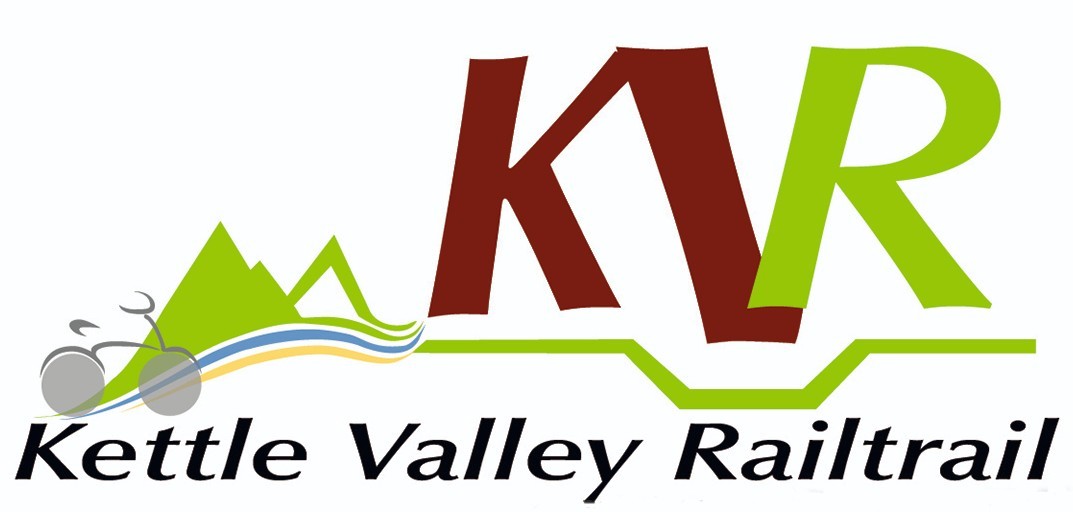 To find this access point turn west off Highway 33 at Beaverdell Station Road at the south end of the little village of Beaverdell. Follow the road over the bridge and around the bend to the left and the KVRT sign will appear on your right.
To find this access point turn west off Highway 33 at Beaverdell Station Road at the south end of the little village of Beaverdell. Follow the road over the bridge and around the bend to the left and the KVRT sign will appear on your right.
Built in the early twentieth century, the Kettle Valley Railway (KVR), was a subsidiary of the CPR, the intention of which was to ensure a Canadian railroad presence in the Boundary Country and the South Okanagan. This section of the railroad, known as the Carmi Subdivision, was constructed beginning in 1910.
Declining use caused the elimination of passenger service on the KVR in 1964. Eight years later this, the Carmi Subdivision, was shut down, with the tracks being torn up sometime later. By 1989 the entire Kettle Valley Railway was abandoned and the tracks removed. In the 1990s work was begun on the construction of the
Kettle Valley Rail Trail (KVRT), which encompasses essentially the entire KVR railbed, from Midway, BC to Hope.
Major sections of the KVRT have since been incorporated into the
Trans Canada Trail, including the entire Carmi Subdivision. Abundant parking is available here as this is a very rural area.
The KVRT is about 455 kilometres in length with numerous access points. The official start, or “Mile 0” of the KVRT is in Midway, BC, while the "end" is at Hope, BC, where it connects with the Silverhope Creek Trail. This trail connects to further trails which continue west to the Pacific. At Midway the trail connects to the
Columbia and Western Rail Trail which is also part of the Trans Canada Trail. The Columbia and Western Rail Trail ends at Midway where the KVRT begins. Though the KVRT runs through mountain country for the entirety of its journey, this being a Rail Trail, there are no grades steeper than 2 to 3 percent.
The entire length of the main section of the KVRT is also the Trans Canada Trail (TCT), currently just over 18,000 kilometres long. It is hoped that, by 2017, the 25th anniversary of the TCT, the trail will be complete, stretching 24,000 kilometres in total.
Kettle Valley Rail Trail
Beaverdell was an official station from 1915 through 1978. Over 90 cars would travel through Beaverdell making it one of the longest trains in its era for freight and passengers.
The silver mining activity at Wallace Mountain started in 1919. By 1930, a small concentrator was built and high quality silver ore was shipped for smelting via the Kettle Valley Railway to Trail, B.C.
By 1960, Beaverdell's population was 300 and Highland Bell processed up to 85 tons per day, shipping three carloads of silver concentrates to Trail. Five sawmills also existed in the Beaverdell area supplying lumber to the Okanagan Valley and beyond.
The mines lasted until 1991. The rail grade to the north is now buried by a large tailings pond built after 1976. Rail service to Penticton ended in 1973, the last concentrates shipped in 1976, and the line was finally abandoned in 1979. The town still lays claim as home to the oldest licensed bar in British Columbia at the Beaverdell Hotel.
From the plaque at the KVRT sign
![]()